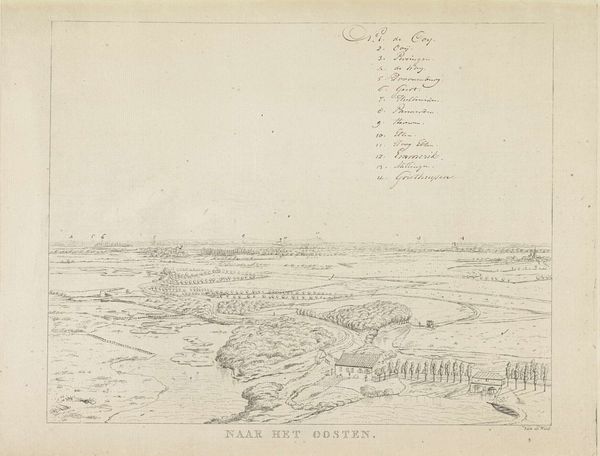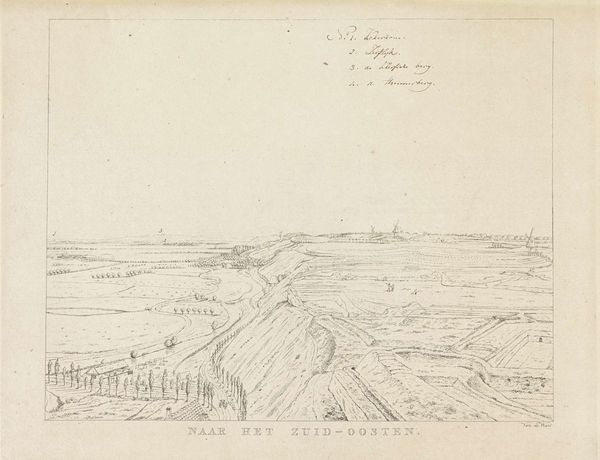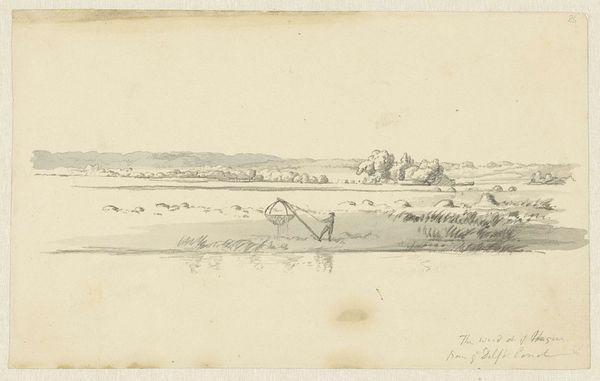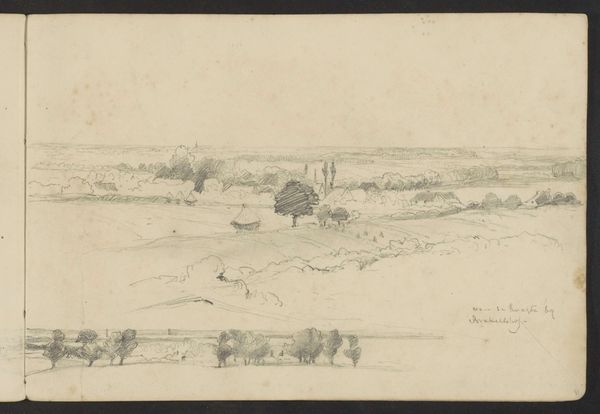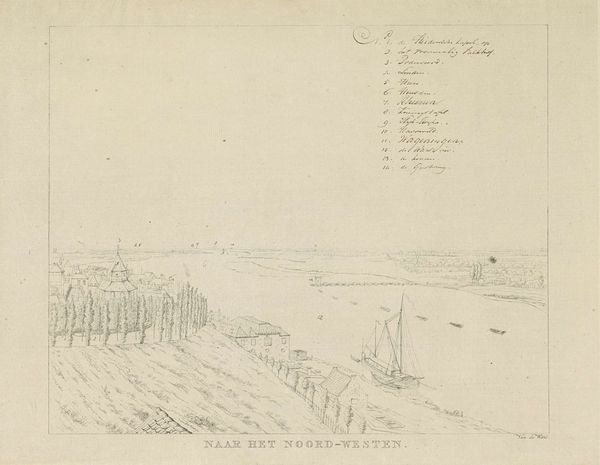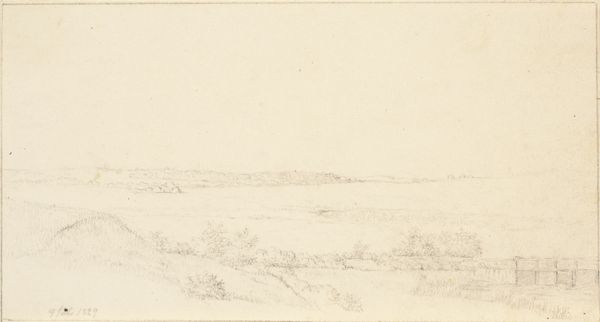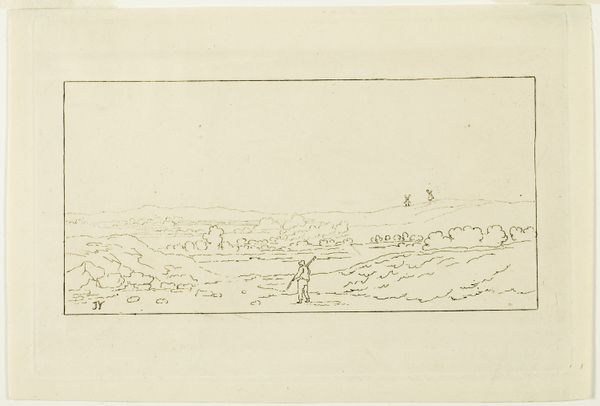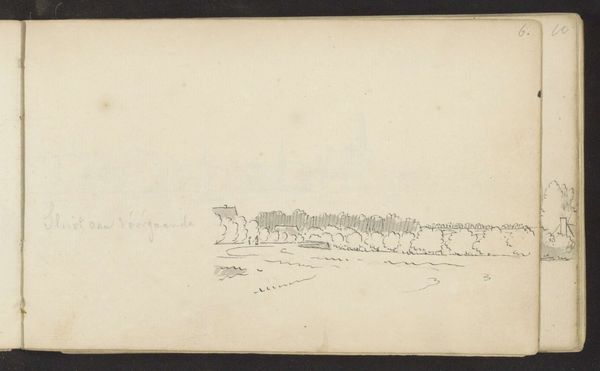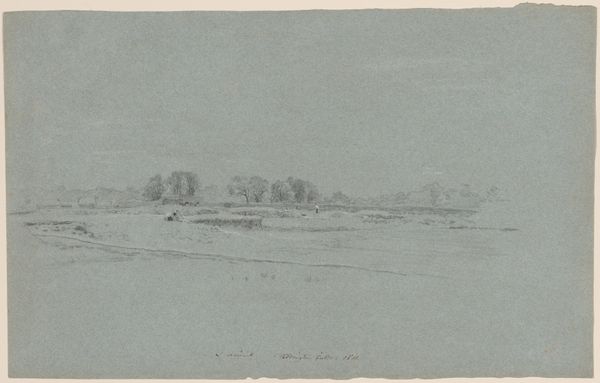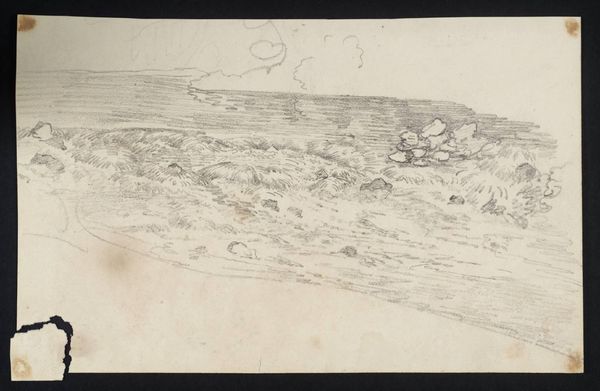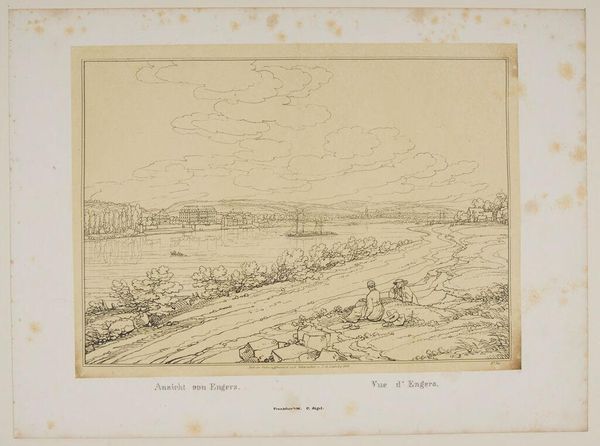
drawing, graphite
#
drawing
#
landscape
#
river
#
romanticism
#
graphite
Dimensions: height 311 mm, width 396 mm
Copyright: Rijks Museum: Open Domain
Curator: This is Derk Anthony van de Wart’s, "View of the Waal to the Northeast of Nijmegen," a graphite drawing created between 1815 and 1824. Editor: It's stark, almost unsettlingly so. There’s a vast emptiness despite the detailed rendering, particularly with that river dominating the composition. Curator: Indeed. The river Waal, a major branch of the Rhine, was not merely a geographic feature; it represented trade, transportation, and connection to the broader world for the Dutch. Van de Wart would certainly have known its symbolic weight. Editor: And the landscape itself? Notice how people are reduced to tiny figures in relation to that dominating river. It speaks volumes about our perceived control versus the reality of nature's power, especially at a time when land management was increasingly contentious. We see those tiny figures, potentially negotiating that landscape through labor or property claims. Curator: Quite astute. There is also a fascinating interplay between the meticulously labeled locations on the horizon, acting as visual anchors within this vast panorama. Consider these placements against the context of the burgeoning Romantic movement—locating the divine in sublime nature. Editor: Precisely! And that placement is no accident; the artist frames a perspective that prioritizes that sense of geographical specificity while subtly underscoring the relationship between the natural world and human presence. The romantic gaze of an ordered world set to an expansive romantic drama. Curator: Van de Wart captures not just a vista, but the intersection of geography, culture, and a hint of human endeavor, all framed within the Romantic ideals of his time. Editor: This drawing prompts questions of who gets to claim and control the narrative, especially when gazing upon a river and landscape pregnant with the tensions of power and change. Curator: I find myself contemplating the drawing's invitation to ponder the complex relationship between humanity and its environment. Editor: For me, this compels me to interrogate our roles in negotiating power within landscapes both social and physical, both then and now.
Comments
No comments
Be the first to comment and join the conversation on the ultimate creative platform.
